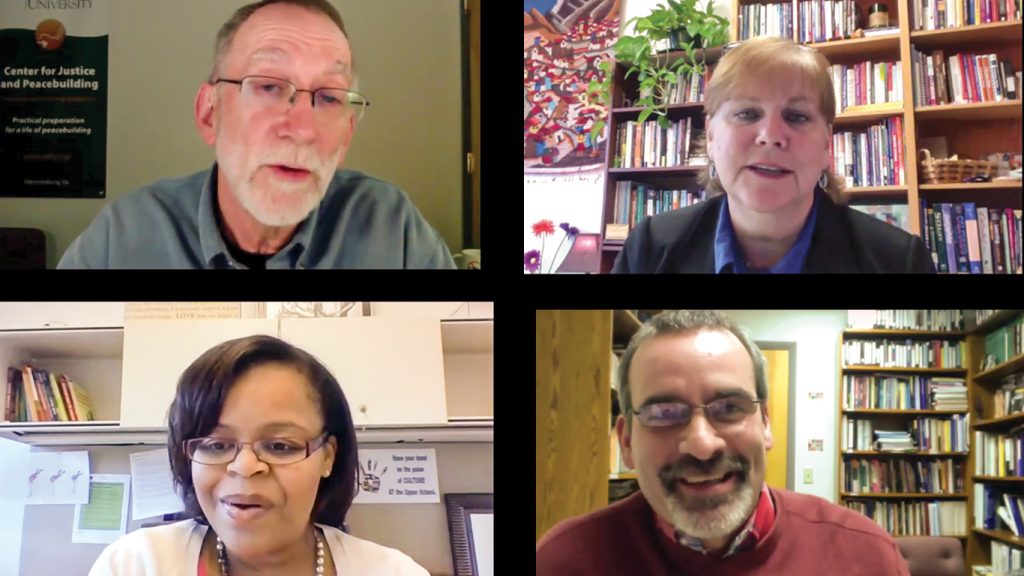In January, the focus was restorative justice and trauma healing; in February, campus sexual assault. In March, the Zehr Institute for Restorative Justice webinar looked at violence against African-Americans. In April, the spring 2016 webinar series ended with a discussion on neuroscience and how human biology contributes to structural injustice.
The Zehr Institute has been sponsoring a regular webinar series – typically once a month in the spring and fall – since it was founded in 2012. Now at more than 30 webinars and counting, the series has become one of the institute’s most successful forms of outreach.
“I would venture to say that we’re becoming sort of the repository where the conversations that are happening on the margins of the field are being brought into the center stage, and that’s exactly what we set out to do,” said co-director Carl Stauffer. “The webinars have been a great platform to have the conversations that we want to have.”
The April webinar, “Can restorative justice address structural and racial injustice? A neuroscience prospective,” was presented by Dr. Cheryl Talley, a professor of neuroscience at Virginia State University and a past member of the CJP Board of Reference.
“[Preparing for] this webinar allowed me to consolidate all of the reading and thinking that I’ve been doing over the years, so it was a really beneficial exercise for me,” said Talley, whose research interests include the intersection of affective neuroscience and social justice.
The webinar attracted around 100 participants, making it one of the Zehr Institute’s best-attended yet. Though unsure of how the audience might respond to some of her more discomfiting points – such as her discussion of the neuroscience research showing how human brains are wired for bias – Talley was pleased by the “far-reaching” discussion that followed her presentation.
Each webinar typically begins with a 35 to 40-minute talk by a guest presenter, followed by an equal amount of time for conversation and discussion among the participants. Over the years, topics have ranged from reform of the criminal justice system, one of the most traditional applications of restorative justice, to indigenous justice, arts-related applications of restorative justice, education and beyond. Recently, Stauffer added, an increasing number of webinars have focused on how restorative justice can inform efforts to transform structural violence and restore communities.
The four webinars scheduled for Fall 2016 will continue the series’ tradition of wide-ranging subject matter.
- Sept. 21: Pre-charge/pre-booking Restorative Diversion: Spotlight on Oakland, California with Sia Henry and Yejide Ankobia, hosted by Howard Zehr.
- Oct. 19: Restorative Justice, Restorative Theology, Restorative Church withh Ted Lewis and Chris Marshall, hosted by Carl Stauffer and Johonna Turner.
- Nov. 2: Making Manna: A story about the failings of the justice system and a victim’s efforts to heal with Eric Lotke, hosted by Johonna Turner.
- Dec. 7: Restorative Justice and the Practice of Law with Brenda Waugh, hosted by Howard Zehr.
As awareness of the webinar series has grown, more and more of the participants from around the country and world are newcomers to Eastern Mennonite University and the Zehr Institute.
“My goal in starting [these webinars] was trying to find ways to connect people,” said Howard Zehr, the institute’s namesake and other co-director. “I think it’s been pretty successful …. It’s certainly enlarging our circle.”
For more information on the upcoming schedule and to access all past Zehr Institute webinars, visit www.zehr-institute.org.
